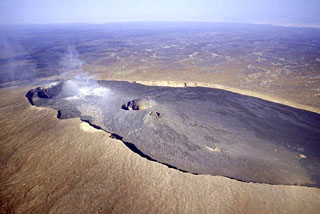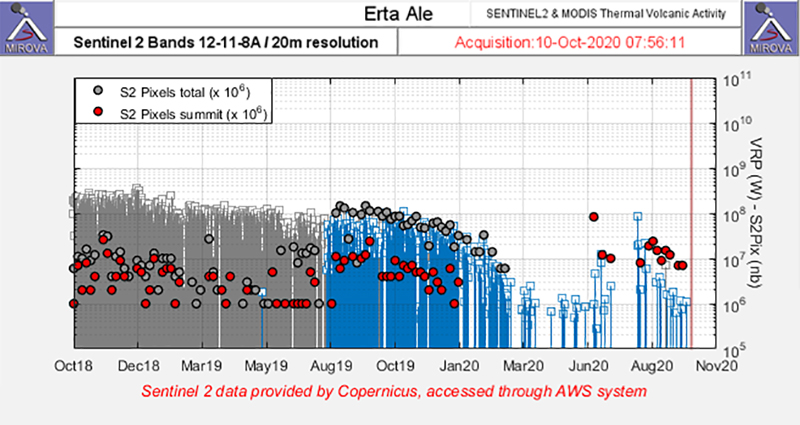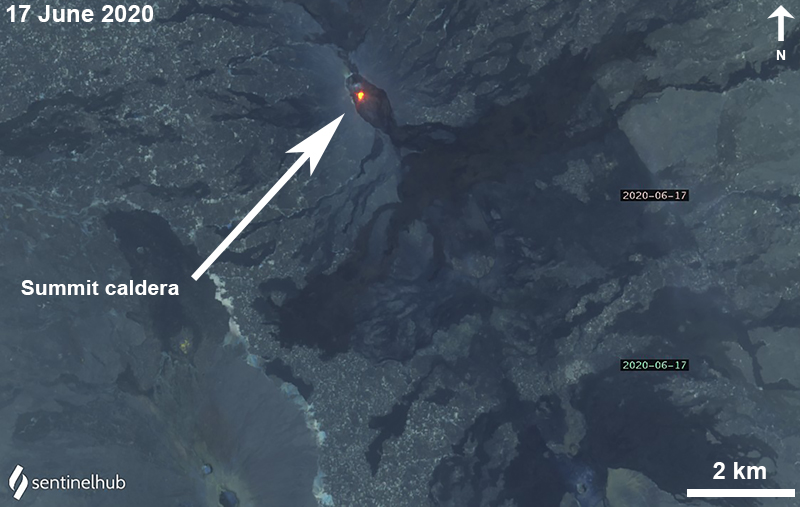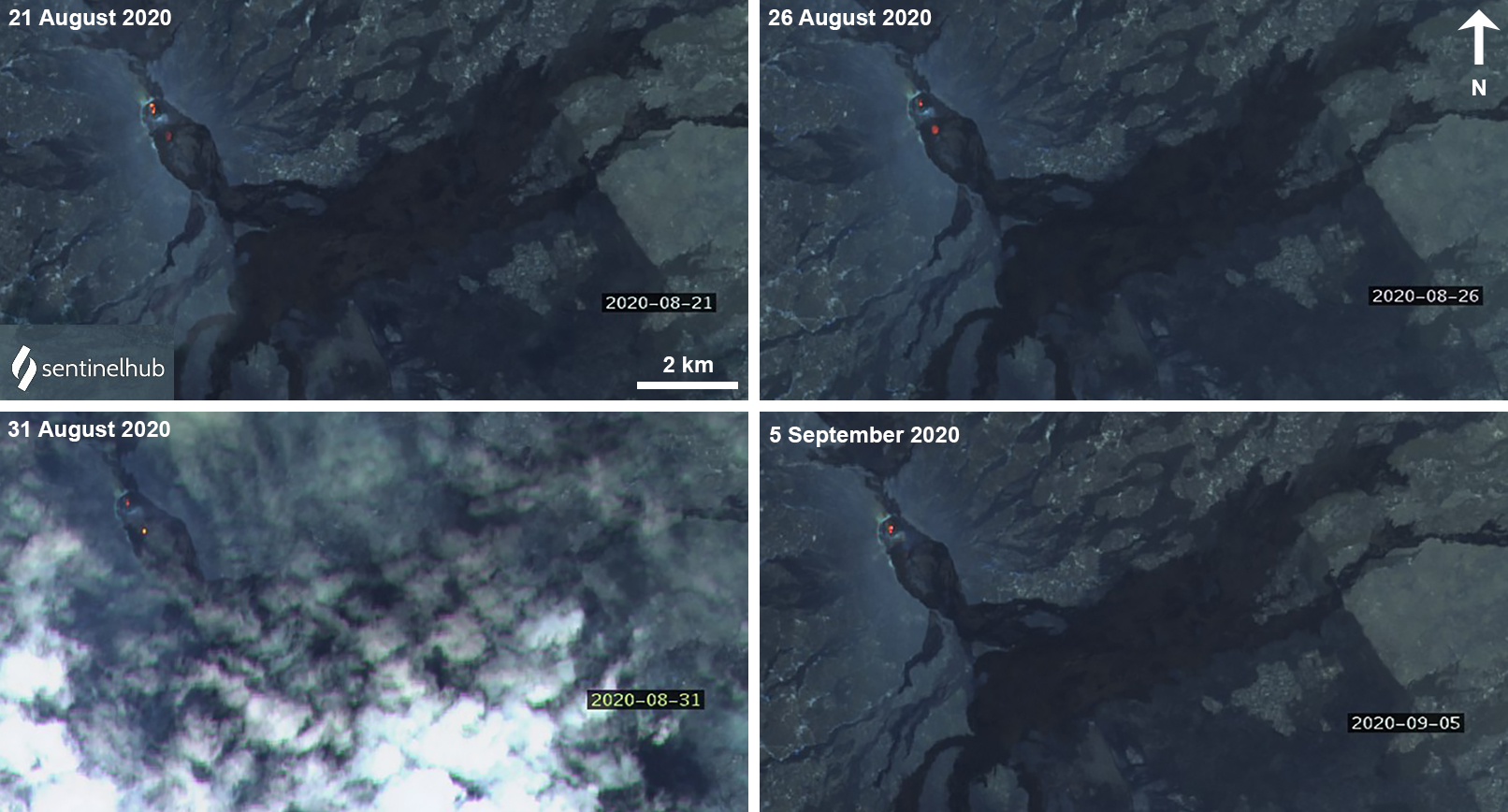Report on Erta Ale (Ethiopia) — October 2020
Bulletin of the Global Volcanism Network, vol. 45, no. 10 (October 2020)
Managing Editor: Edward Venzke.
Edited by Kadie L. Bennis.
Erta Ale (Ethiopia) Thermal anomalies persist in the summit crater during May-September 2020
Please cite this report as:
Global Volcanism Program, 2020. Report on Erta Ale (Ethiopia) (Bennis, K.L., and Venzke, E., eds.). Bulletin of the Global Volcanism Network, 45:10. Smithsonian Institution. https://doi.org/10.5479/si.GVP.BGVN202010-221080
Erta Ale
Ethiopia
13.601°N, 40.666°E; summit elev. 585 m
All times are local (unless otherwise noted)
Erta Ale is an active basaltic volcano in Ethiopia, containing multiple active pit craters in the summit and southeastern caldera. Volcanism has been characterized by lava flows and large lava flow fields since 2017. This report describes continued thermal activity in the summit caldera during May through September 2020 using information from various satellite data.
Volcanism at Erta Ale was relatively low from May to early August 2020. Across all satellite data, thermal anomalies were identified for a total of 2 days in May, 7 days in June, 4 days in July, 11 days in August, and 15 days in September. Beginning in early June and into September 2020 the Sentinel-2 MODIS Thermal Volcanic Activity graph provided by the MIROVA system identified a small cluster of thermal anomalies in the summit area after a brief hiatus from early January 2020 (figure 99). By mid-August, a small pulse of thermal activity was detected by the MIROVA (Middle Infrared Observation of Volcanic Activity) system. Many of these thermal anomalies were seen in Sentinel-2 thermal satellite imagery on clear weather days from June to September.
On 12 June a minor thermal anomaly was observed in the S pit crater; a larger anomaly was detected on 17 June in the summit caldera where there had been a previous lava lake (figure 100). In mid-August, satellite data showed thermal anomalies in both the N and S pit craters, but by 5 September only the N crater showed elevated temperatures (figure 101). The thermal activity in the N summit caldera persisted through September, based on satellite data from NASA VIIRS and Sentinel Hub Playground.
Geological Summary. The Erta Ale basaltic shield volcano in Ethiopia has a 50-km-wide edifice that rises more than 600 m from below sea level in the Danakil depression. The volcano includes a 0.7 x 1.6 km summit crater hosting steep-sided pit craters. Another larger 1.8 x 3.1 km wide depression elongated parallel to the trend of the Erta Ale range is located SE of the summit and is bounded by curvilinear fault scarps on the SE side. Basaltic lava flows from these fissures have poured into the caldera and locally overflowed its rim. The summit caldera usually also holds at least one long-term lava lake that has been active since at least 1967, and possibly since 1906. Recent fissure eruptions have occurred on the N flank.
Information Contacts: MIROVA (Middle InfraRed Observation of Volcanic Activity), a collaborative project between the Universities of Turin and Florence (Italy) supported by the Centre for Volcanic Risk of the Italian Civil Protection Department (URL: http://www.mirovaweb.it/); Hawai'i Institute of Geophysics and Planetology (HIGP) - MODVOLC Thermal Alerts System, School of Ocean and Earth Science and Technology (SOEST), Univ. of Hawai'i, 2525 Correa Road, Honolulu, HI 96822, USA (URL: http://modis.higp.hawaii.edu/); Sentinel Hub Playground (URL: https://www.sentinel-hub.com/explore/sentinel-playground); NASA Worldview (URL: https://worldview.earthdata.nasa.gov/).




